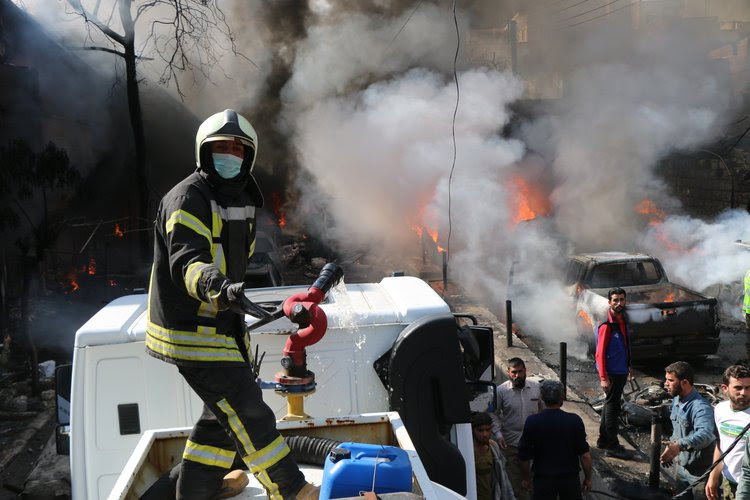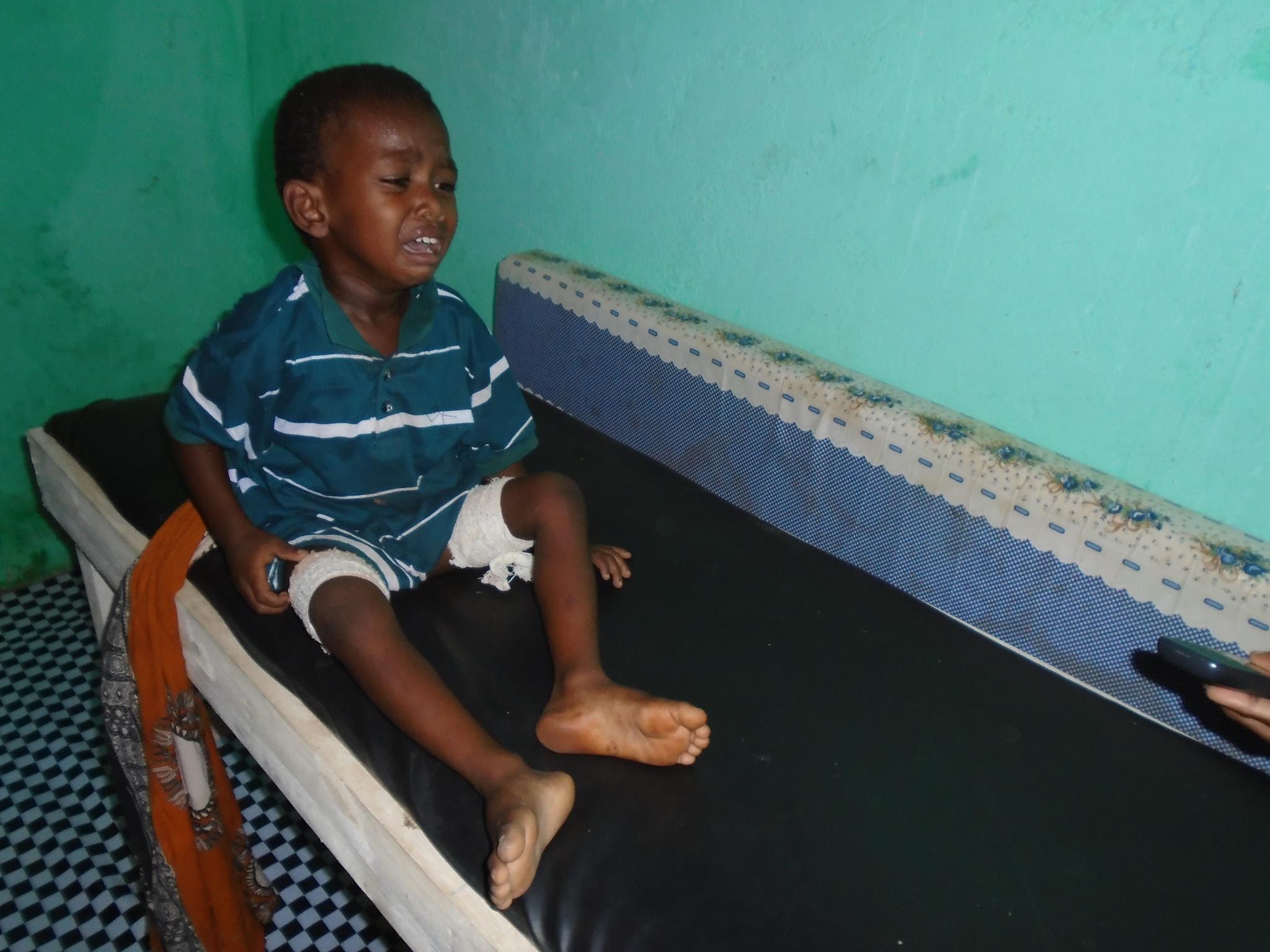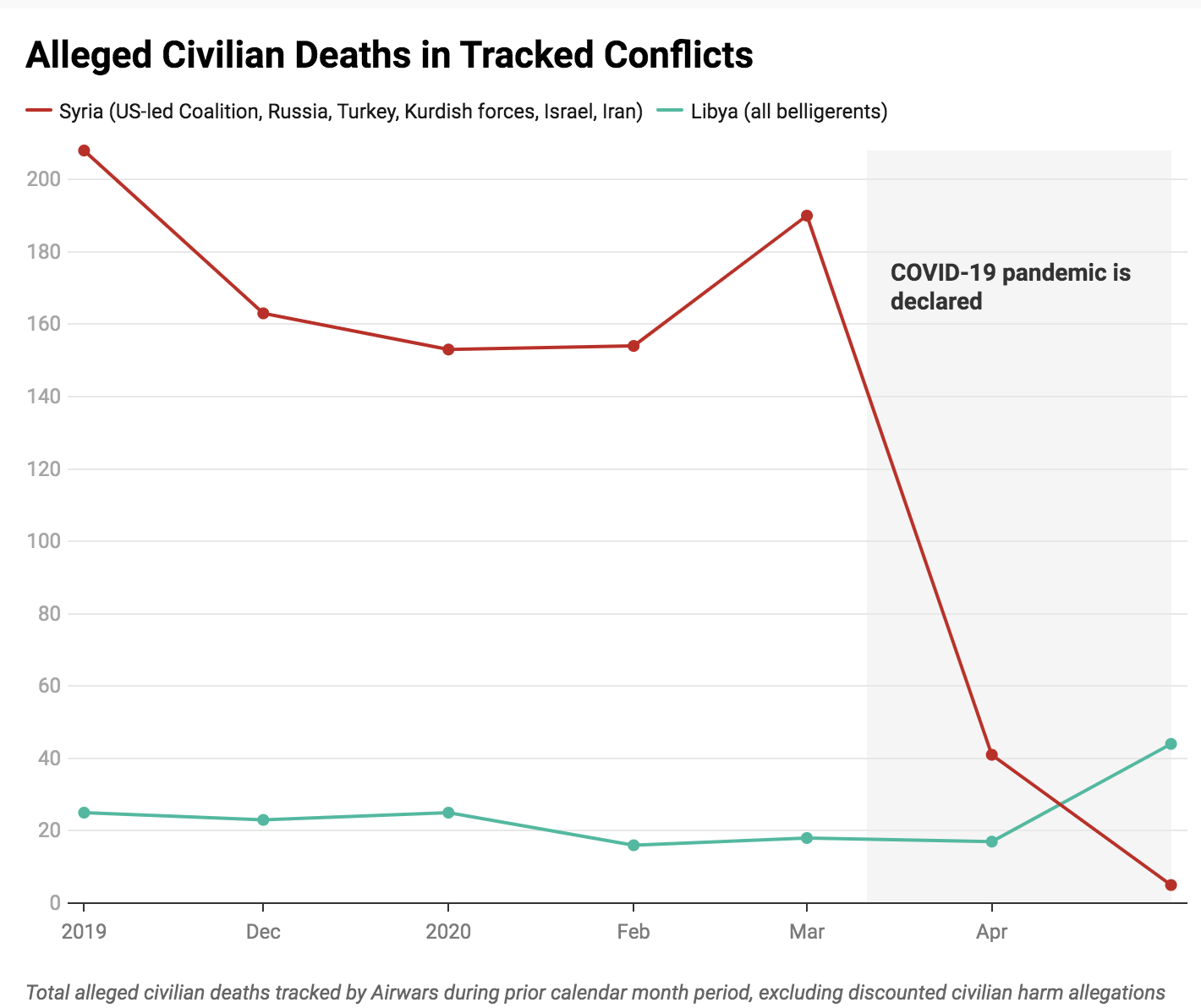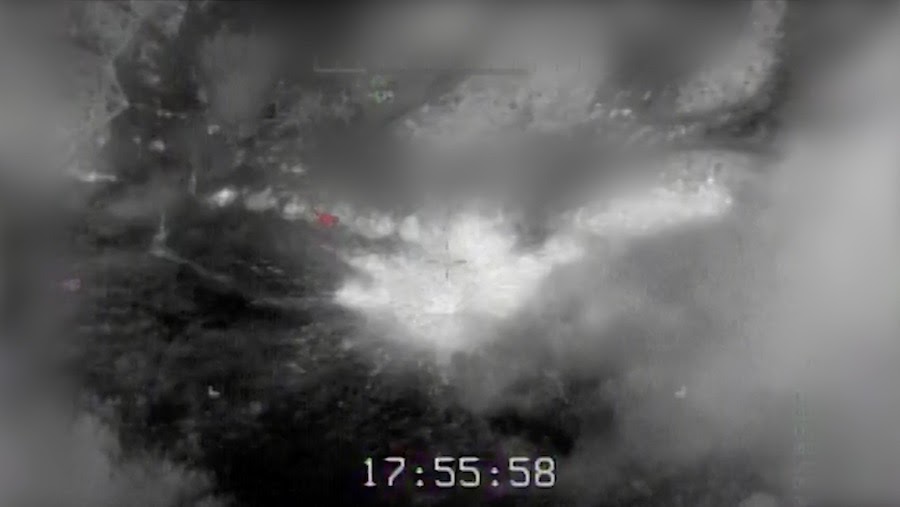Major Conflict Monitoring
The COVID-19 pandemic has emerged as the most serious public health crisis this century and continues to dominate most governments’ domestic and foreign policy. Airwars research shows that the crisis has brought about a significant though perhaps short-lived peace dividend in a number of conflict nations. April 2020 saw an almost unprecedented reduction in civilian harm incidents in Syria for example, whilst Iraq continues to see minimal reported civilian harm allegations against foreign actors.
However, this peace dividend has failed to extend to Libya. That conflict has escalated significantly, as Turkey has stepped up its armed intervention on behalf of the Government of National Accord (GNA), against the opposition Libyan National Army. As both sides sought military dominance in Tripoli and other towns and cities across Libya, civilian suffering also multiplied from previous months.
As shown by the below graph, since the outbreak of COVID-19, civilian harm in Syria, usually the most active conflict which Airwars monitors, has decreased significantly. However, this welcome trend has not applied to Libya, where the fighting became more intense in April, following the escalation of Turkey’s air campaign against the LNA. For the first time since we began tracking civilian harm in both nations, reported deaths in Libya outstripped those in Syria.
Civilian harm in Libya grows as Turkey escalates air campaign
Libya witnessed a significant increase in both reported civilian casualties and airstrikes in April, partly due to the Turkish air campaign in favour of the Government of National Accord (GNA). The number of reported civilian deaths rose from 17-19 in March to 44-52. The number of alleged air and artillery strikes increased by 50% from 163 to 245.
The majority of civilian harm was still allegedly caused by the Libyan National Army (LNA), which reportedly shelled civilian neighbourhoods of Tripoli on many occasions. This led to between 20 and 23 locally reported civilian deaths. In the worst incident, up to four civilians were allegedly killed and up to eight more injured by LNA shelling on Tajoura on April 9th.
Civilian harm from GNA or Turkish actions spiked in April as a result of combined efforts to recover territory previously lost to the LNA in Western Libya. Between eight and ten civilians were reportedly killed by 55 GNA or Turkish air and artillery strikes. On April 28th for example, a GNA/Turkish drone strike allegedly killed up to five civilians in a civilian truck near Ra’s at Tabal.
Once again during the month, many civilian harm events could not be clearly attributed because of indiscriminate shelling in urban areas. These led to 16 to 19 reported civilian deaths either contested between the GNA and LNA, or where the responsibility of no one belligerent could be determined.

Image via Tk Yahroug Kl shy of a truck carrying beehives that was allegedly hit by a Turkish/GNA drone on April 28th 2020
Syria: Ceasefire brings month of calm from Russian airstrikes
As countries across the world battled to contain the spread of COVID-19, the campaign in Idlib was brought to an almost complete halt. Airwars tracked no civilian harm incidents involving Russia during all of April – the first such month of no reported civilian casualties since Moscow first intervened in Syria in September 2015.
The pause in fighting came after UN Secretary-General Antonio Guterres called for a global ceasefire at the end of March so that governments could focus on fighting the virus, and allow for humanitarian workers to reach populations in conflict zones that were most vulnerable to the spread of the virus. The absence of civilian harm attributed to Russia suggested that the ’ceasefire dividend’ brought about by COVID-19 may have been quite effective in bringing about much-needed respite from conflict, at least in Syria.
However, according to the Syrian Observatory for Human Rights, Russian airstrikes were carried out during April in desert regions of Syria against ISIS positions, killing 28 alleged militants. Additionally, there were sporadic reports of Regime shelling in Idlib Governorate in areas near the southeastern Jabal al-Zawiya region on April 2nd.
The US-led Coalition in Iraq and Syria
April was once again a relatively calm month for the US-led Coalition in Syria, with no civilian harm allegations reported.
However, there were reports of Coalition strikes against ISIS positions in Syria, as well as claimed unilateral US strikes on Iran-backed forces in the country. On April 18th, a Coalition aircraft targeted two people riding a motorbike, near a school in Al-Hawaij town in the eastern countryside of Deir Ezzor. According to Deir Ezzor 24, the strike came moments after ISIS militants had destroyed a school with explosives. Most sources reporting on the airstrike say that the two people killed were ISIS militants that were likely involved in the destruction of the school.
On April 21st, local sources reported that a convoy carrying up to 15 members of Iranian-backed groups in Syria was allegedly targeted by a US strike. The convoy reportedly came from Iraq to the al-Thalatat area in the Al-Bukamal desert area, east of Deir Ezzor.
Meanwhile, International Coalition airstrikes in Iraq also continued. On April 10th, the UK declared its first actions against ISIS targets since September 2019. According to a statement by the Ministry of Defence, a pair of Royal Air Force Typhoon jets, assisted by an RAF Reaper drone, struck ISIS militants in Tuz Khurmatu, south of Kirkuk, “removing several Daesh fighters from the battlefield and further degrading the terrorist movement.”
Three days later, US F-15s conducted airstrikes on ISIS locations near Kirkuk in Iraq. The strikes reportedly took place in a river valley, 15 kilometres south of Daquq. According to the Iraqi Security Media Cell, the joint operation with Iraqi Security Forces led to 23 ISIS militants being killed. These attacks came after a recent uptick in ISIS activity in northern Iraq.
Turkey in Syria
While fighting in Syria had largely subsided following the ceasefire deal signed between Presidents Putin and Erdogan in Moscow on March 5th, civilian harm incidents resulting from Turkish-led actions continued to be sporadically reported, albeit at a slightly lower rate than previous months.
Airwars tracked seven separate civilian harm allegations against Turkish-led forces over the course of April. These incidents led to two civilian deaths and the injury of up to 14 more, according to local sources. This represents a significant decrease from the previous month, which saw four civilian fatalities and 27 injuries from ten Turkish-led civilian harm incidents. Additionally, according to Airwars data, children were less harmed from alleged Turkish incidents compared to the previous month when three of the four civilians reported killed were children. In April only one child was reportedly injured.
All the incidents took place in the first ten days of the month (again suggesting a possible ‘Covid effect’.) The deadliest took place on April 2nd in the villages of Qabr al-Saqir and al-Abosh in the Tal Tamr district of Hasakah Governorate. According to local sources, two people lost their lives and four others were injured after Turkish forces fired a barrage of shells on residential neighbourhoods in the villages.
In Iraq, there were local reports of two civilian harm incidents resulting from Turkish airstrikes on the Kurdistan Region of Iraq during the month. On April 15th, an alleged Turkish airstrike on the Makhmour IDP camp killed three women and injured up to four others. In a separate incident on April 28th, Turkish warplanes struck the Xakurke area, on the Iran-Iraq border. The airstrike reportedly killed two civilians, whose identities were later given as Fakher Tazewared (35 years old) and Rashid Miroir (36 years old). The victims were reportedly from the town of Shino in Iran.

Image via Politika of a funeral held for the three women killed in the airstrike on the Makhmour IDP camp on April 15th.
Kurdish counterfire in Syria
Airwars tracked no civilian harm incidents resulting from Kurdish counterfire actions during the month of April. This is the first month that no civilian harm allegations against Kurdish armed groups have been reported since September 2019 – before Turkey’s offensive in Northeastern Syria.
However, on April 28th a large VBIED was detonated in the city of Afrin, killing as many as 42 people and injuring more than 50 others. The explosion took place near the densely populated main market in the city. Some sources claimed that the YPG was responsible for the attack, though these reports were not confirmed.

Image via SCD of a fireman putting out the flames from the car bomb in Afrin city on April 28th.
US counter-terrorism campaigns
Somalia
The number of reported US strikes in Somalia decreased sharply in April, presumably because of the ongoing Covid-19 pandemic. AFRICOM declared conducting eight strikes at the beginning of the month, seven less than in March. It claimed these had killed 32 Al Shabaab fighters in total.
Local sources at times conflicted with AFRICOM’s own press releases, alleging civilian harm on two occasions. On April 6th, between two and three civilians were reportedly killed by a US strike near Jilib. In addition, one child was allegedly injured, while AFRICOM said no civilians were harmed in the attack.
Additionally, on April 10th one elderly clan leader was allegedly killed according to some local sources. However, AFRICOM later vehemently refuted the claims in a statement: “Immediately prior to the airstrike, this al-Shabaab terrorist displayed the murdered bodies of Somali National Army (SNA) soldiers in a village. Following this act of coercion and intimidation, the al-Shabaab terrorist departed the village. Once isolated in a remote and secluded area, the terrorist was killed by an airstrike executed by the command in coordination with the Federal Government of Somalia.”
On April 27th, AFRICOM for the first time released a quarterly civilian harm report, conceding two civilian deaths – believed to be a father and child – from an incident in Kunyo Barrow on February 23rd, 2019. AFRICOM had originally dismissed the claim. But it reopened an assessment after Airwars submitted a detailed dossier on the incident in January 2020, including what were believed to be precise coordinates for where casualties took place.

Image via Morad News of Ahmed Hussein, allegedly injured in a US strike on Jilib on April 6th, 2020.
Yemen
According to CENTCOM, there were no US military strikes during April 2020 in Yemen. However, there were multiple reports from local sources of two US drone strikes in Marib and Shabwa provinces. It remains possible that one or both of these incidents was conducted by the CIA, which has intermittently been conducting strikes in Yemen since 2002 – but which neither confirms nor denies such actions.
On April 11th, the Yemen Press Agency reported an alleged US drone strike on the home of a leading figure of the Islah party in Marib, Ali bin Ghareeb, under the pretext of combating al-Qaeda’s presence in the area. Although Ali bin Ghareeb was unharmed, there were reports of civilian casualties from the attack, although no details have emerged on the number harmed or their identities. There were conflicting reports which suggested that the attack was instead carried out by a Houthi ballistic missile, though most sources seemed to allege that US drones were responsible.
A second claimed drone strike took place in Wadi Amaqin in the district of Bayhan in Shabwa Governorate on April 26th. According to Associated Press, two strikes were conducted in the area killing six al-Qaeda militants. Bayhan has long been a stronghold for al-Qaeda in the Arab Peninsula and has therefore been the subject of numerous drone strikes over the last few years.

Map via Intelligence Fusion-Asia showing the claimed location of a recently alleged US drone strike in Shabwa on April 26th.
Pakistan
There were no publicly alleged CIA strikes in Pakistan against either Al Qaeda or the Taliban during January. The last such reported US strike was in August 2018.
Advocacy
UK advocacy
Airwars gave a presentation, ‘Using casualty monitoring to hold militaries to account’ in a webinar hosted by EveryCasualty’s Casualty Recorders Network. This was a great opportunity to present Airwars’ work and experience and our recent investigation into European civilian harm, as well as a chance to meet and talk with other organisations who work in this domain.
Airwars also signed a joint letter coordinated by Crisis Action to the UN Security Council, to support calls for a global ceasefire in light of the COVID-19 crisis.
We additionally submitted a short paper to the United Nations Office of the High Commissioner for Human Rights, concerning the impact of the diversion of arms and unregulated or illicit arms transfers on the human rights of women and girls in Libya.
In April Airwars also signed the NGO Global Compact coordinated by InterAction, which includes commitments towards environmental action and sustainability as a result of the climate crisis.
And finally, Airwars has updated its Arabic-language Methodology, which can be accessed on our website.
European advocacy
With the past few months heavily focused on Dutch advocacy after the Hawijah scandal broke in October 2019, our deputy director and European advocacy officer have taken the opportunity to reconnect with our partners and allies in France and Belgium. Several digital meetings were held to discuss how civil society in both countries might better encourage progress in terms of transparency and accountability, following our Europe’s Shame investigation in March.
We also held several online roundtable meetings with our Dutch partners to discuss a conceptual roadmap towards greater transparency and accountability from the Dutch Ministry of Defence, which we plan to present to the Ministry in early June.
As a member of the International Network on Explosive Weapons (INEW), Airwars’ advocacy team also sought with opur partners to improve the forthcoming Political Declaration by nations, which is expected to address the humanitarian harm arising from the use of explosive weapons in populated areas.
Military advocacy
The US-led Coalition fighting ISIS in Iraq and Syria published no monthly civilian harm reports during April. However the Coalition’s civilian casualty assessment team reached out to Airwars on several occasions during the month to request clarification from our specialists on a number of publicly claimed civilian harm events.


